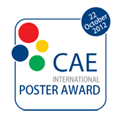We present a generalization of the Turbulent Flame Closure (TFC) turbulent premixed combustion model. The current version of the TFC model describes the transient turbulent flame, which in the laboratory conditions (the Bunsen or V-flames) is characterized by increasing width dt and nearly constant flame speed Ut, i.e. the flame is well represented by a traveling turbulent mixing layer. Such flame regime also exists in industrial burners so the TFC model has found application for combustion modeling in industrial gas turbines. The TFC model, however, has limitations since it does not describe: (i) the initial stage of flame formation (important in internal combustion engines) as well as (ii) the final steady state stage of the flame (a nearly steady state 1D flame takes place, for example, in the ultra lean weak burner developed in the Berkley Lawrence laboratory).
The current version of the TFC model corresponds to the physical situation when the small-scale wrinkles of the flame sheet (controlling the flame surface area and hence Ut) are already statistically at equilibrium, while the large-scale wrinkles (controlling the flame width dt) have not yet reached the statistical equilibrium. The model equations are based on theoretical results in the framework of Kolmogorov ideas in turbulence.
The generalized TFC model describes also the initial and final stages of the flame. The description of the initial stage is based on an analogy with the development of turbulent diffusion described by the Taylor theory. A key point in the formulation of the model is that the development of turbulent diffusion Dt according to Taylor must be described in the Eulerian reference frame and it must be frameindependent. Subsequently, the flame speed Ut can be expressed as a function of Dt. The description of the final stage is based on the Kolmogorov ideas (this aspect is only briefly discussed). Additionally, the effect of the pressure-driven acceleration of reactants and products is also discussed. This effect is the main reason of the counter-gradient scalar flux and of the strong anisotropy of the velocity fluctuations common in premixed flames. Considerations about this effect are made to explain why the "k- " turbulence model is applicable in spite of the counter-gradient flux and the anisotropy of velocity fluctuations. |




